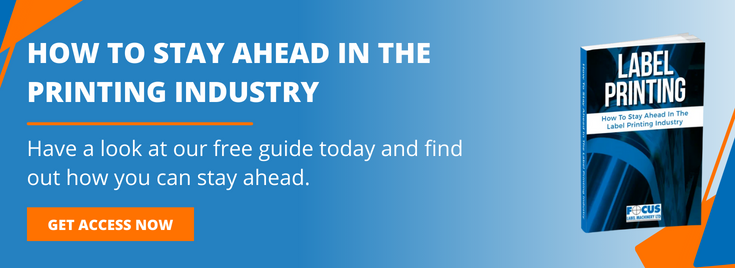
Efficiency and accuracy have always been non-negotiable in the printing industry but advances in textile printing machinery have stimulated faster production, greater customisation, and reduced waste, thereby meeting the evolving demands of a diverse and dynamic market. Businesses can now choose from a variety of printing methods to meet their specific production needs, each of which offers advantages in speed, quality, and flexibility. Therefore, it’s essential that printing businesses understand which technique best aligns with their objectives.
In this article, we’ll consider three print production methods for large and small volume label printing.
Digital printing: precision and flexibility for variable data
Sometimes, you only need to print a small volume of a particular label, so it’s important to optimise your use of resources and avoid needless waste. Digital printing, which is renowned for its quick turnaround and ability to handle variable data, is advantageous for low volume printing or creating product samples. It's also ideal for imprinting batch numbers, date codes, or other variable data, thanks to its precision and low costs.
Garment /Textile Labels
Foil Printing & Thermal Foil printers have been used in the Garment industry for many years. However , they have some quality limitations and are costly to operate.
Digital inkjet printing is a recent development and in particular, achieves exceptional accuracy with seamless change from job to job allowing businesses to closely monitor ink consumption, print speed, and print quality. To date capital equipment cost & ink costs have restricted growth in this area, but we anticipate more growth in this unique sector.
Flexo printing: ideal for high-volume production
To meet the demands of large-volume printing, flexographic, or flexo, printing has become the go-to method due to its versatility which ensures high-speed production without compromising on efficiency. It's also noteworthy for its minimal ink consumption and press speed, which are vital metrics for cost-effective label printing.
With inkjet speeds now matching those of flexo, it's possible to combine these technologies, particularly where variable data or customisation is required. A hybrid approach maximises the benefits of both methods, making it a strategic choice for many industries.
Offset printing: the standard for high-quality, high-volume printing
Offset printing delivers high-quality, high-volume printing, making it the first-choice for large-scale sheet format printing applications, such as boxes, posters, sheets, and labels. By monitoring ink consumption, press speed, and colour consistency, offset printing produces vibrant and consistent images while retaining excellent cost-efficiency and minimal waste.
With the evolving demands of the market, printing press manufacturers, such as HP and Xeikon, have designed digital alternatives to analogue offset printing presses. By integrating digital capabilities, offset printing can now offer the efficiency of large-scale production and the flexibility of digital customisation.
Download our free guide
To find out more, please download our free guide ‘How To Stay Ahead In The Label Printing Industry’ and, if you have any questions, please get in touch with Focus Label.
Image source: Canva







